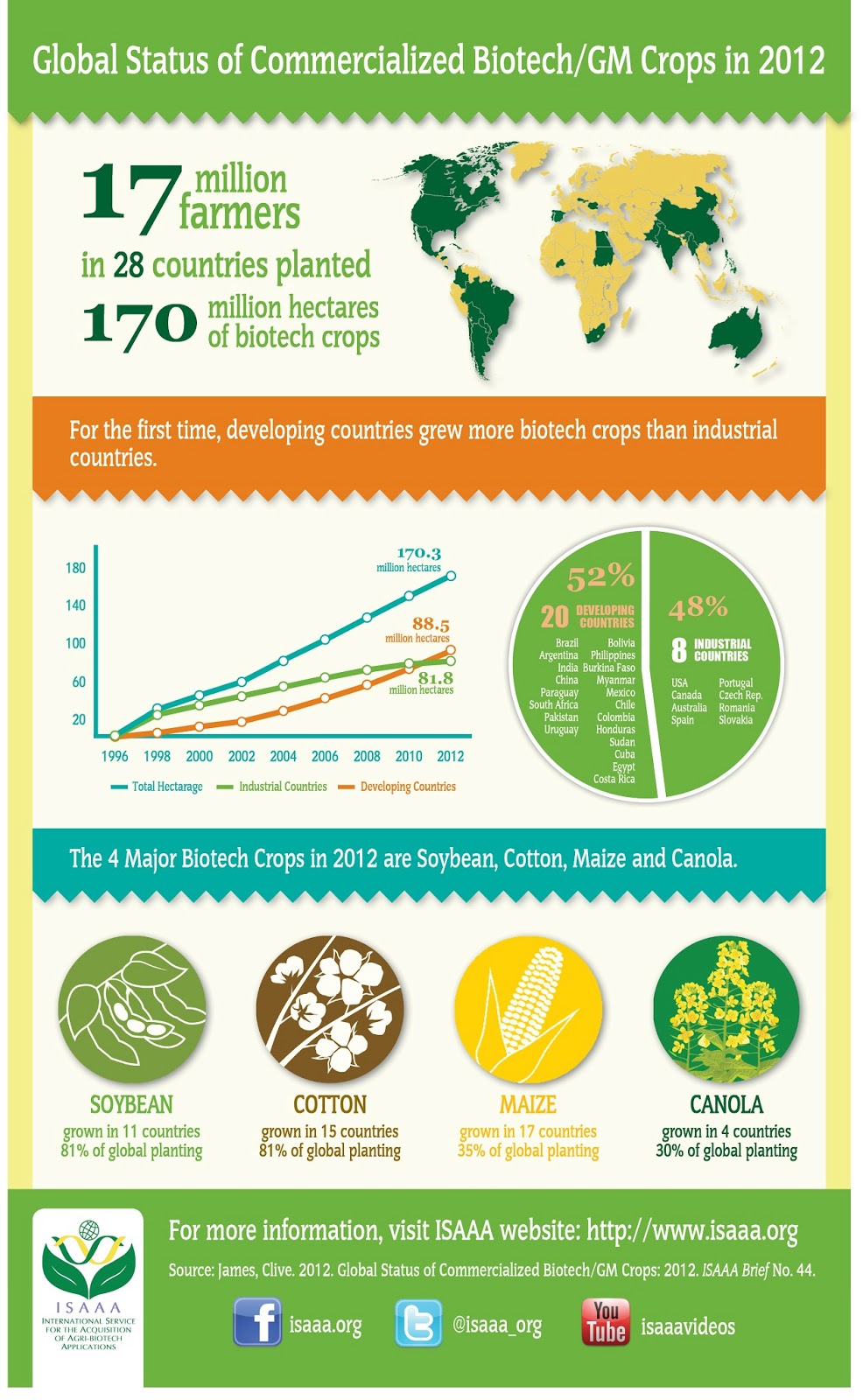In 2012, 170.3 million hectares of commercialized biotech crops were planted by more than 17 million farmers in 28 developing and industrial countries worldwide. These numbers are clear indications that many farmers from different agricultural conditions choose biotech crops because of the benefits they offer.
Unknown to many people, biotech crops pass through rigorous, science-based evaluation for a number of years before they reach farmers’ fields to assure the public that these crops are safe to consumers' health and the environment. In the United States
In an effort to put together such information, ISAAA created the GM Approval Database, an easy to use online atlas of biotech crops approved for cultivation, trade and/or consumption. The database features the basic information on different crop genetic modifications (GM) called events, and the summary of regulatory approvals granted for these events in different countries.
 |
In an effort to put together such information, ISAAA created the GM Approval Database, an easy to use online atlas of biotech crops approved for cultivation, trade and/or consumption. The database features the basic information on different crop genetic modifications (GM) called events, and the summary of regulatory approvals granted for these events in different countries.
 |
| GM Approval Database page from ISAAA's website. |
Led by Drs. Rhodora R. Aldemita and Renando O. Solis, ISAAA intended this database to be of general use, and its developers sought to simplify its contents and maximize the convenience of navigating through the information that the database can provide according to its users' preferences. Dr. Solis said that while the database provides only basic and summarized information for each of the hundreds of events currently in the atlas, users can be directed to other online sources for additional information.
The database does provide the latest information on approved GM events, which adds to its increasing functionality. So far, most of the feedbacks have come from users who are involved in seed business or seed regulation, and some get to contribute to update the current data. The synchrony of international approvals for biotech crops would have an impact on international seed and food trade, and this is the reason why ISAAA is constantly on the watch to track these approvals through the pre-commercial pipeline of every country. Researchers and biotech advocates have also sent feedback, and their suggestions open avenues for further improvement.
ISAAA’s GM Approval Database currently holds information for 329 unique events representing 26 biotech crops with regulatory approval in at least one country for food/feed use or commercial cultivation. Links to more than 2,000 regulatory documents and related information are also provided.
For more information about ISAAA and the Global Knowledge Center on Crop Biotechnology, visit our website at: http://www.isaaa.org/ and http://www.isaaa.org/kc. To subscribe to the weekly Crop Biotech Update, click here: http://www.isaaa.org/subscribe.
ISAAA is also on Facebook (https://www.facebook.com/isaaa.org) and Twitter (https://twitter.com/isaaa_org).
.jpg)







